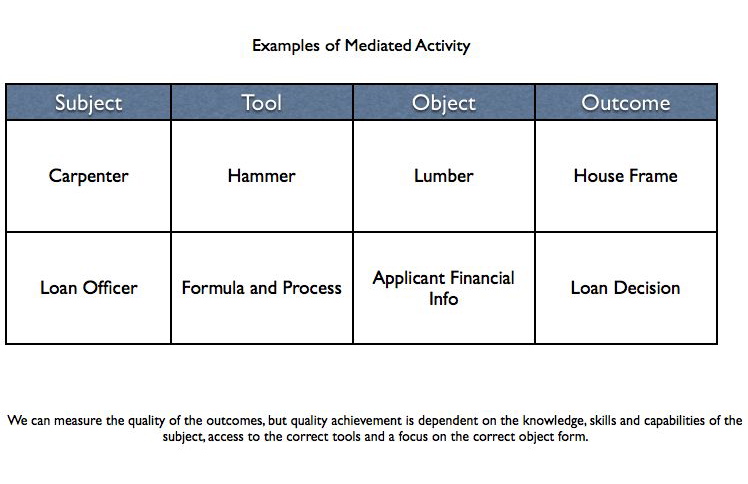A couple articles relevant to my 12-6 post, which may also form the beginnings of a partial psychological explanation of Richard Forida’s Spikey World and Creative Class theories. (Note – Florida’s data is primarily a correlative macro-analysis, however, these theories must also function and be analyzable at a micro level in a way that represents people’s everyday relationships.)
First, the opposite perspective – What will not help Education
Recent news is reporting on America’s falling test scores and the potential dire consequences if improvement is not found. Now, I really can’t make a judgement without delving deep into the data, but I suspect that the most direct route to improving test scores will be some form of discipline and it will be exactly the opposite of what would help us devise a competitive advantage vis a vis the rest of the world. Test scores are not the answer. The answer is innovation for business and economic success.
How to Create Innovation and a 21st Century Economy: Play
I’ll examine 2 articles that make the case for the importance of play and a positive playful attitude for creation and innovation. Furthermore, read below the surface and you will find that this is not just for children. A playful attitude is important wherever creativity is needed and today that is almost everywhere.
Tracing the Spark of Creative Problem-Solving by Benedict Carey
Main point –
. . . people were more likely to solve word puzzles with sudden insight when they were amused . . . positive mood, is lowering the brain’s threshold for detecting weaker or more remote connections” to solve puzzles. . . . “It’s imagination, it’s inference, it’s guessing; and much of it is happening subconsciously,” said Marcel Danesi, a professor of anthropology at the University of Toronto and the author of “The Puzzle Instinct: The Meaning of Puzzles in Human Life.” “It’s all about you, using your own mind, without any method or schema, to restore order from chaos,”. . .
Those whose brains show a particular signature of preparatory activity, one that is strongly correlated with positive moods, turn out to be more likely to solve the puzzles with sudden insight than with trial and error . . . “At this point we have strong circumstantial evidence that this resting state predicts how you solve problems later on,” Dr. Kounios said, “and that it may in fact vary by individual.”
The second article is from Fast Company’s Design Blog; Frog Design: The Four Secrets of Playtime That Foster Creative Kids
There is a myth, common in American culture, that work and play are entirely separate activities. I believe they are more entwined than ever before. As the Swiss psychologist Jean Piaget once said, “Play is the answer to how anything new comes about.” A playful mind thrives on ambiguity, complexity, and improvisation—the very things needed to innovate and come up with creative solutions to the massive global challenges in economics, the environment, education, and more. . . . How then can we get our youngest generation to embrace the role of designer rather than (game) player? Fundamentally, it starts by letting children be the inventors of play.
The article recommends 4 ways to make this happen.
- Open Environments – open environments are those in which the child gets to be the author and the medium is open to interpretation.
- Flexible Tools – Part of being open is being flexible. Technology has given us a whole new set of tools, though they’re being used in ways not necessarily planned for.
- Modifiable Rules – Being open and flexible within parameters is necessary and even helpful, but what happens when the parameters themselves no longer fit our needs?
- Superpowers – the physical and mental skills that we develop to adapt and thrive in a complex world while exploring the creative opportunities made possible by global progress. . . . It’s crucial to understand that we aren’t born with playful minds, we create them. . . . When 85 percent of today’s companies searching for creative talent can’t find it, will more focus on standardized curriculum, testing, and memorization provide the skills an emergent workforce needs? Not likely. Play is our greatest natural resource. In the end, it comes down to playing with our capacity for human potential. Why would we ever want to limit it? In the future, economies won’t just be driven by financial capital, but by play capital as well. (Emphasis added)
The Play Ethic
In the Afterword to the book Education in the Creative Economy (Play, the Net, and the Perils of Educating for the Creative Economy) Pat Kane speaks of a new basis for work informed by the play ethic (and a new common sense):
(A)fter the obsolescence of the work ethic . . . (t)he play ethic is an alternative belief-system that asserts that in an age of mass higher education, continuing advances in personal and social autonomy, and ubiquitous digital networks (and their associated devices), there exists a surplus of human potential and energy that will not be satisfied by the old workplace routines of duty and submission.
Kane calls neoteny (the retention of juvenile features in the adult animal) the basis of our biological non-specialization that allows us to respond uniquely to unusual circumstances.
(W)e are not determined by our environment, but make and construct our worlds? This is mirrored by the “permanent precarity of jobs,” where we wander nomadically from one cloud in the nebulous world of labor markets to another.
While this state has the potential to produce anxiety, it also holds the possibility to unleash the “constitutive power of play” that can be productively used, especially if we can wed it to a resilience and supportive infrastructure

